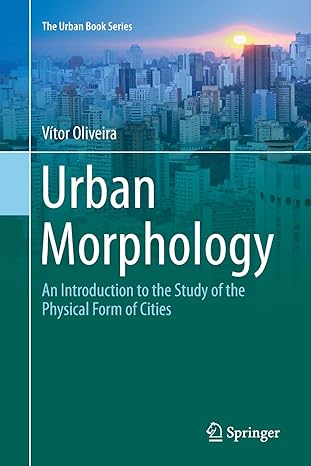Exercise 2.1The Game of Cities The game of cities is an exercise that brings out the importance
Question:
Exercise 2.1—The Game of Cities
‘The game of cities’ is an exercise that brings out the importance of both collective action and streets in the process of city-making (Oliveira and Perdicoulis 2014). ‘The game of cities’ is played in a computer aided design (CAD) environment, projected on the wall, with the players being coordinated by a moderator. The game is in two parts. There is a common process, but these parts are made of different contents. The first part of the game presents a site merely as a topographic relief—preferably of a real city, the city where the game is taking place (Fig. 2.16, left). The first player is called to play, while all the others watch, and is asked to draw one urban form element: streets (and also squares and green areas), street blocks, plots, and buildings
(including common and singular buildings). If one player decides to design streets, street blocks or plots, the width and length of each of these elements is enough. If a player designs one or more buildings, then must also provide the height and the use (residence, commerce/services/offices, public equipment, industry). When the design of the first player is concluded, the second player is called to play. Contrary to the first player of the game, who finds a totally vacant terrain, the second player has to considerer not only topography, but also the elements of urban form designed by the first player. One by one, all players are called to play. If the number of players is high (e.g. 15 or more), then each player should play only once. If the number of players is low, it would be interesting to go through a second round. The result of the game will be a small (part of
a) city with different inputs from different agents, simulating what happens in real life.
The second part of the game goes one step further: the diagram of the site reveals not only topography, but also the existing street system (Fig. 2.16, right). The street patterns may turn the site familiar, and some players are likely to recognise it. The dynamics of the game in the second part are very similar to the first, yet the actions of each player are considerably conditioned by the street system. The players are expected to gradually understand the fact and the way that a street system will contribute to the organization of the urban form elements of the city.
The contribution of ‘The game of cities’ is towards the conscience that city-making is a collective work, achieved in successive steps of development by many agents, and a change of focus from buildings to streets.
Step by Step Answer:

Urban Morphology An Introduction To The Study Of The Physical Form Of Cities
ISBN: 287081
2nd Edition
Authors: Vitor Oliveira





